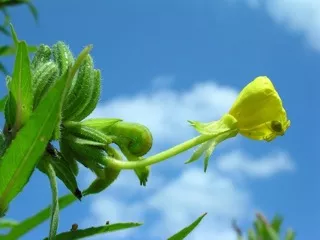
Latitudinal gradients in herbivory on Oenothera biennis vary according to herbivore guild and specialization
Living in warmer climates isn’t all it is cracked up to be, or is it? Ecologists have long hypothesized that the intensity of antagonistic species interactions increases towards the tropics. For example, plants at lower latitudes are predicted to be eaten more by insect herbivores. A recent paper by Ph.D. candidate Daniel Anstett (Johnson Lab) calls this hypothesis into question. Daniel recently published “Latitudinal gradients in herbivory on Oenothera biennis vary according to herbivore guild and specialization” in Ecology. In this paper he tested if herbivory is highest at lower latitudes across the entire North-South species range (Ontario to Florida) of common evening primrose, Oenothera biennis. Daniel found that across different insect herbivores all possible patterns were observed with latitude, where insect feeding guild and degree of herbivore specialization explained much of this variation. His results show that hypotheses concerning latitudinal gradients in species interactions are overly simplistic.
